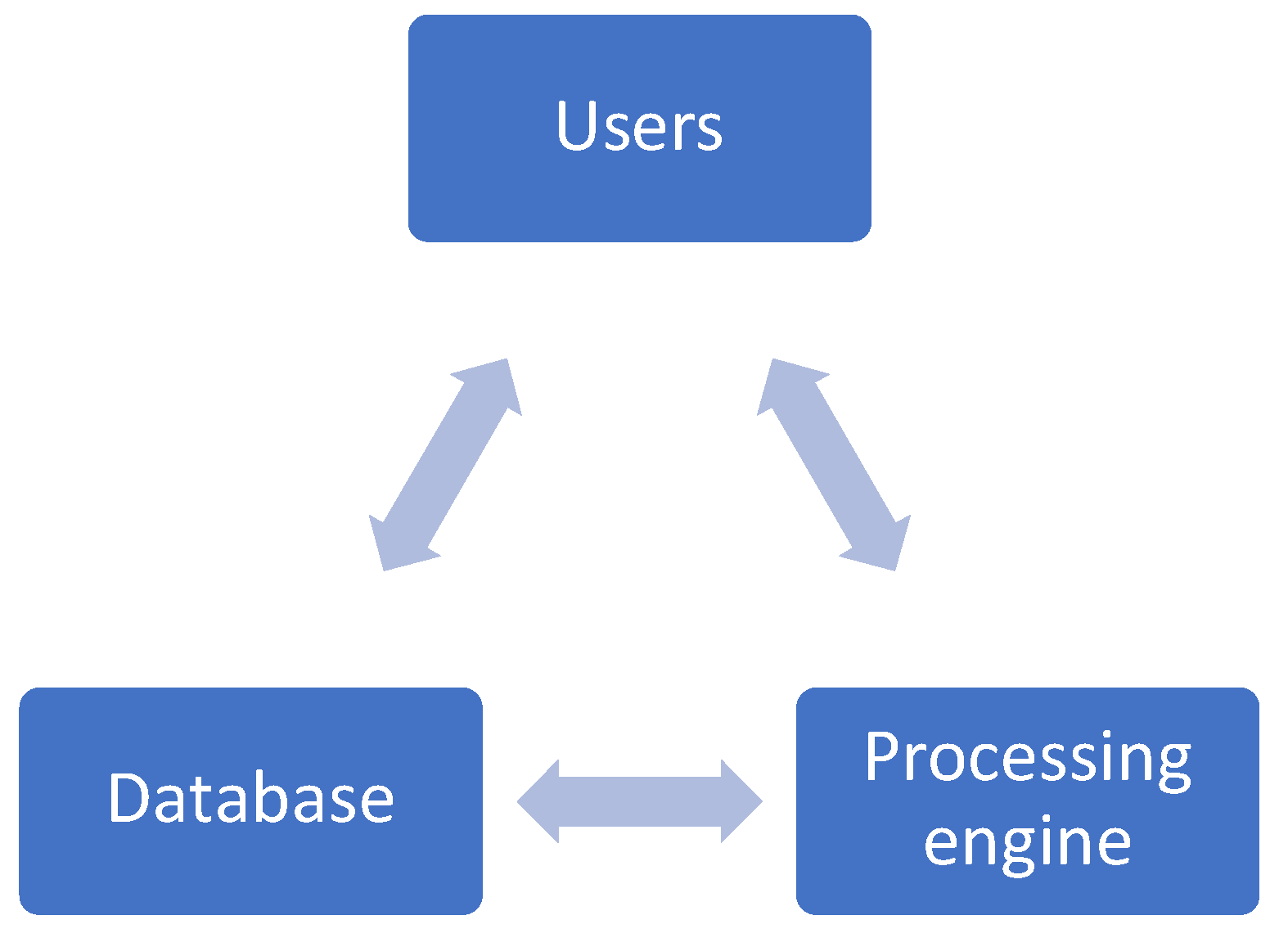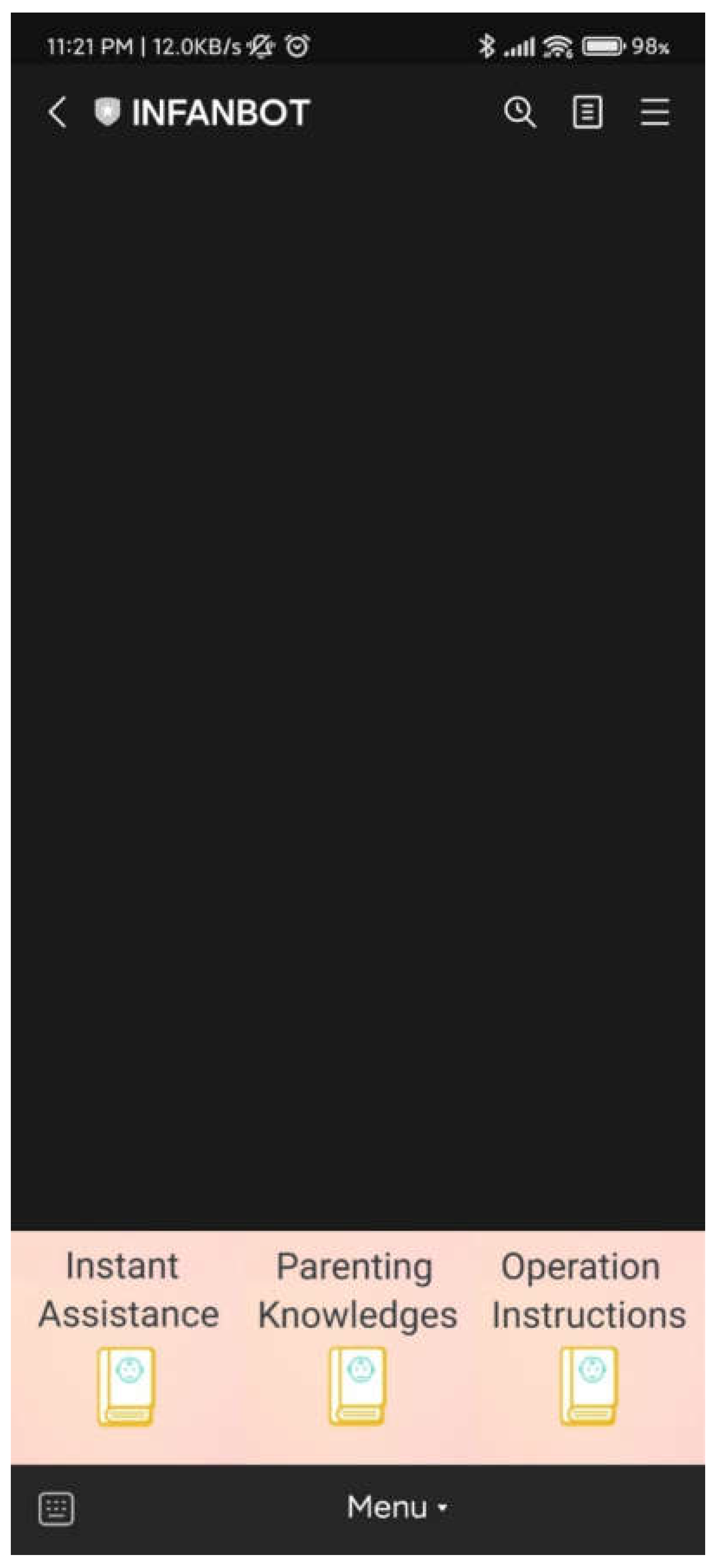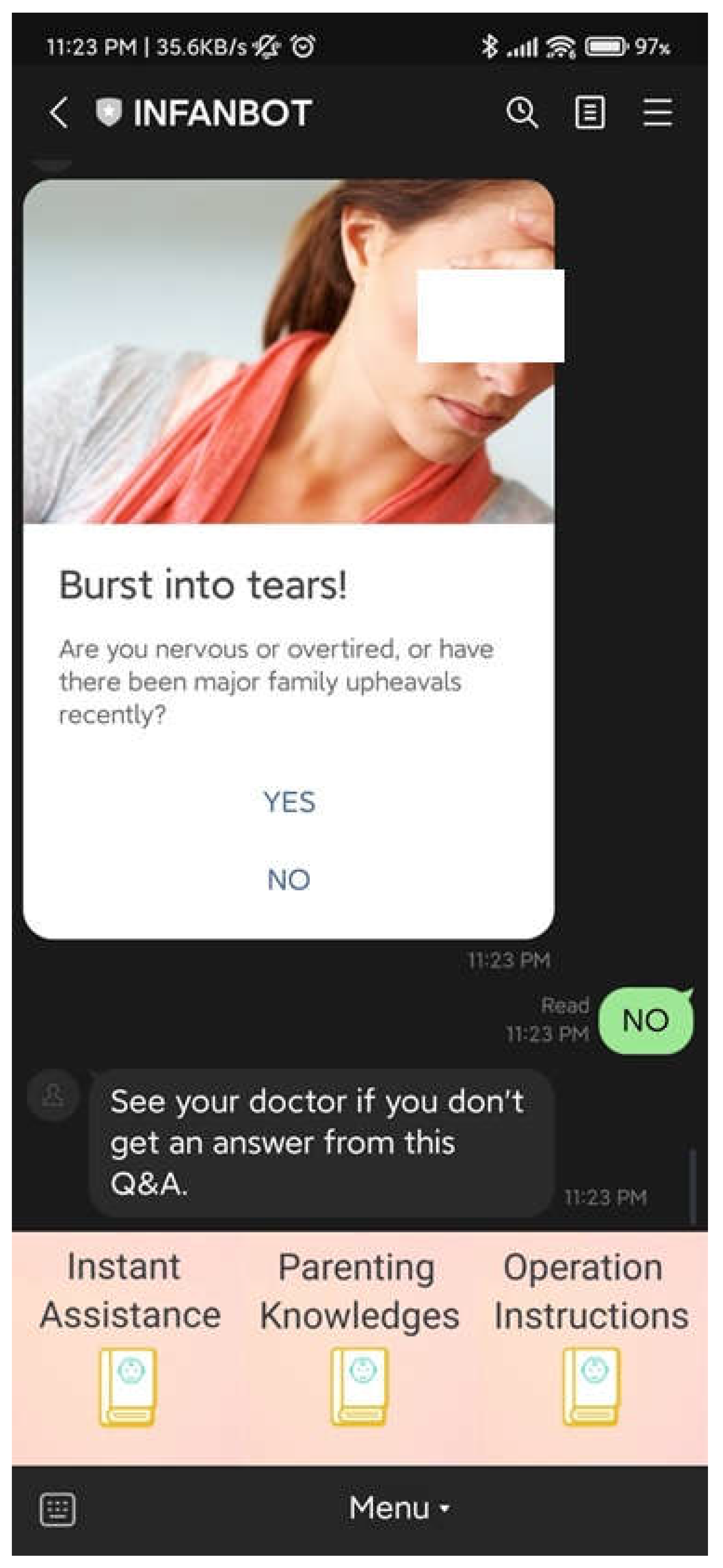1. Introduction
1.1. Literature Review
Bornstein [
1] pointed out that raising a baby is hard work, especially for new mothers who are overwhelmed and anxious in the face of new life. Nowadays, most parents are from dual-income families, and they are often physically and mentally exhausted from work and education. Even if newlyweds have a common understanding of raising children, they will retreat due to different educational concepts and economic problems [
2].
Baumrind [
3,
4] divided parenting behavior into four types: authoritative, authoritarian, permissive, and uninvolved, which made it clear about the types of parenting. Parents interact with different types of parenting styles. Shaffer [
5], based on Baumrind’s [
3,
4] parenting types, believes that the positive impact of democratic parenting on children is the most supported, and the results are consistent across different ethnic cultures. Children under democratic upbringings have better cognitive and social abilities. When they reach adolescence, children under democratic upbringings also show higher self-esteem, stronger social abilities, higher achievement motivation, and academic achievement. At the same time, the child’s risk of getting involved in drugs and problematic behavior is also low. Abidin [
6] mentioned that parenting is a very complex task and that parenting, often, must be carried out in very labor-intensive situations with limited resources and the uncertainty and difficulties of children. When parents cannot handle these situations well, life stress will come and become more serious every day.
To reduce the burden of parents in raising their children, this paper proposes a chatbot named INFANBOT, which interacts with users with voice or text about the knowledge of children’s health and education. It can help new parents acquire knowledge in a faster way and reduce the harassment of parents. These situations in parenting will no longer be a difficult problem. With INFANBOT it makes new parents balance work and family care easier.
1.2. Aim of the Research
A chatbot, short for chat robot, is a software application designed to interact with users using text or text-to-speech functionality. Designed to make users feel as if they are talking to a live human agent, most chatbots utilize artificial intelligence (AI) algorithms or natural language processors to generate the necessary response [
7].
Many companies have begun to launch their chatbot platforms to provide consumers with personalized services. For example, LEGO, a well-known toy brand, has previously used a chatbot (Ralph) on Facebook Messenger. The main idea of this chatbot is to help users find a perfect gift! Lidl supermarket is a German supermarket chain with more than 8000 branches around the world, which provides consumers with wine shopping guides and food-matching skills through chatbots (Margot). This kind of conversational commerce that combines robots and mobile devices has become a new business model.
Gerbaudo [
8] mentioned that social media brings people closer. The popularity of mobile devices and instant messaging software has changed the way people communicate. Communication over the Internet is no longer just between people but mostly between people and devices [
9]. Ellison et al. [
10] believe that online communities provide users with more opportunities to interact, communicate, share, establish, or maintain relationships.
According to data from the Comscore MMX Multi-Platform from January to December 2020, 85% of people over the age of 12 are on a mobile device. These users are accustomed to using fixed instant messaging apps such as Facebook Messenger, WhatsApp, LINE, etc. Therefore, it can be seen that instant messaging software has become an indispensable part of people’s lives. The usage and penetration rates of LINE are much higher than other social platforms, showing that LINE has become the main communication platform. Therefore, LINE will be a good choice for designing chatbots.
The research aims are as follows: 1. To solve the parenting troubles mentioned by Bornstein [
1]. 2. To provide corresponding treatment methods to avoid the problems of different parenting concepts mentioned by HAKIM [
2]. 3. To solve parenting problems immediately.
2. Chatbots
Turing & Haugeland’s [
11] Turing test, originally called the imitation game by Alan Turing in 1950, is a test of a machine’s ability to exhibit intelligent behavior equivalent to, or indistinguishable from, that of a human. Turing proposed that a human evaluator would judge natural language conversations between a human and a machine designed to generate human-like responses. The Turing test is considered the ultimate goal of artificial intelligence and tests whether a computer exhibits intelligence equivalent to a human. In the Turing test, the evaluator uses a conversation to tell whether the subject is a computer or a real person. If the evaluator could not reliably tell the machine from the human, the machine would be said to have passed the test.
ELIZA [
12] is an early natural language processing computer program created from 1964 to 1966 at the MIT Artificial Intelligence Laboratory by Joseph Weizenbaum. Eliza simulated conversation by using a “pattern matching” and substitution methodology that gave users an illusion of understanding on the part of the program, but it had no built-in framework for contextualizing events. While ELIZA was capable of engaging in discourse, ELIZA could not converse with true understanding. [
13].
Chatbots have been successfully used in many computer applications. Winkler and Söllner [
14] stated that chatbots are becoming ubiquitous in many fields such as medicine, the product and service industry, and education. Chatbots are a new way of exposing software services through a conversational interface [
15]. Chatbots bring intelligent conversations, and every new development is advancing at an unprecedented rate [
16]. Questions asked by users can be analyzed by keyword analysis to determine possible answers. The knowledge or information in the existing database is then integrated to generate answers to answer users’ questions [
17]. Any relevant information can be added to the answer, which not only makes the question-answering system a channel for obtaining information but also a shortcut to speed up the transmission of information to allow users to quickly acquire knowledge. Commercially, chatbots also play an important role [
18].
The INFANBOT proposed in this study is a task-oriented chatbot system that is written in Python and aims to enable users to easily obtain children’s health and education knowledge in interactive conversations, in order to assist them in raising children conveniently. For instance, when the user speaks their problem to INFANBOT, the INFANBOT employs a voice recognition device to determine the appropriate answer for the user’s problem so that the user can fix the baby’s/child’s problem in a fast and easy way. Users can also interact with INFANBOT with selections. INFANBOT provides solutions for parents who are troubled by parenting through social media, and provides an instant, convenient, and diversified information exchange in the face of the clueless parenting process.
3. Design Technique and Methods
3.1. Study Design
The method used in this study is to issue questionnaires. A questionnaire is a research instrument that consists of a set of questions for the purpose of gathering information from respondents through a survey or statistical study. The experiment will last for three months. Within three months, the system will send questionnaires to users who are using INFANBOT or have used it more than twice. Users are welcome to fill in the questionnaire and give feedback to improve the INFANBOT system. After the experiment is over, we will conduct a preliminary analysis and summarize the questionnaire results.
3.2. System Design
When designing a chatbot, we will divide it into five steps [citation]. In the first part, we will determine the purpose of the bot, which is to help novice parents parent their children in this study. In the second part, we need to decide whether the base of the system is rule-based or NLP/AI-based. In this study, we chose the rule-based database because our responses come from books. In the third part, we want to make the chatbot respond as if they are a real person without being obtrusive. Here, we use a flex message. This method is provided by LINE. It is similar to a button. The user only needs to select the situation encountered; when the child has a problem, the user only needs to browse the listed problems, and the user does not need to increase the difficulty of use by inputting while looking at the child. In the fourth part, we will design the conversation flow of the chatbot. In the last part, we will select a suitable platform for deployment. In this study, we chose LINE because it is more user-friendly than other chat software and provides more different ways of messaging, such as flex messages.
The INFANBOT system on the server side comprises two major modules: the database and the processing engine.
Figure 1 shows the simplified architecture of the INFANBOT system.
Users can access INFANBOT via LINE on their mobile phones and devices through the mobile operating systems iOS or Android.
On the server side, the system requires Python version 3.8.13, Ngrok, and a LINE Developers account. The other employed packages include line-bot-sdk version 2.3.0 and flask version 2.2.2.
The knowledge base of the chatbot INFANBOT developed in this study comes from [
19] pediatricians at Chang Gung Hospital. INFANBOT can reduce parenting stress and can assist parents in the parenting process. Users can obtain relevant answers by accessing the question-answering system.
3.3. The Database
Since INFANBOT is task-oriented for assisting with parenting, all questions and answers are stored in the relational database named PostgreSQL [
20]. PostgreSQL is a kind of open-source software and relational databases, such as MS SQL and Oracle. However, PostgreSQL is a free relational database.
Figure 2 is a diagram of the relationship.
The data sheet “User” records the user’s basic information and the user’s current QA and knowledge-acquired progress. The data sheet “QA” is used to store the questions and answers; it contains all the parenting questions and answers of the system to answer the questions the user asks. The data sheet “Knowledge” is used to store the knowledge of parenting, it contains all parenting knowledge that the user needs to know and will help the user with parenting their baby/child.
3.4. Processing Engine
While the INFANBOT server is running, the system will monitor all incoming messages including text messages, voice messages, etc., to the server. If a user sends a text message after selecting a flex message, the system will perform the following steps:
(1) When the user logs in to the dialogue window with the INFANBOT, a function menu will appear to allow the user to choose the assistance type they want. In
Figure 3, Instant Assistance, Parenting Knowledge, and Operation Instructions are shown in sequence.
(2) When receiving the “Instant Assistance” request from a user, the system will first query the database whether the user is a new user or an old user. If it is a new user, the system will store the new user’s data on the User’s Data Sheet of the database and then send the “Instant Assistance menu” to the user. The user can scroll left and right to choose what they want, as shown in
Figure 4.
(3) After the user selects the assistance they need, the system will start to process and respond to the user’s first yes or no question about the problem, as shown in
Figure 5.
(4) After the user replies yes/no, it will continue to ask the relevant yes and no questions according to the user’s response until the end of the question, as shown in
Figure 6.
(5) When the question is over, if the system can find out the cause of the problem, it will reply to the user with the possible reason and the way to deal with it, as shown in
Figure 7.
(6) However, when the question is over, if the system cannot find out the cause of the problem, it will reply that the user must go to the hospital for further examination and give the user the option to seek medical information or to call 911, as shown in
Figure 8.
(7) When receiving the “Parenting Knowledge” request from a user, the system will first query the database on whether the user is a new user or an old user. If they are a new user, the system will store the new user’s data on the User’s Data Sheet of the database and then send the “Parenting Knowledge menu” to the user. The user can scroll left and right to choose what they want, as shown in
Figure 4.
(8) After the user selects the knowledge they need, the system will start to process and respond to the user’s article about the knowledge
(9) After the user has read the selected knowledge, the user can click the quiz button to determine whether they have learned it and help the user to deepen their impression.
4. Evaluation and Result
Referring to the educational theory put forward by Diana Baumrind [
3,
4], this study designed a user behavior assessment questionnaire and conducted statistical analysis to observe whether INFANBOT can meet the needs of users and whether it can effectively provide new parents with parenting assistance.
The subjects of the study were parents with child-rearing difficulties as the main research subjects; gender, age, education, occupation, and other factors of the subjects were not limited. The core of the questionnaire study is to understand the user’s basic parenting knowledge and the user’s satisfaction with INFANBOT.
The questionnaire for this study was set up in IFANBOT. When the user adds INFANBOT as a friend in LINE and uses it for some time, INFANBOT will ask users to fill in the questionnaire at an appropriate time. Users can choose to fill in the questionnaire now or later. The distribution method of this questionnaire is similar to that of an online questionnaire. INFANBOT’s questionnaire system was launched in early December 2020, and the questionnaire system was closed in early February 2021. According to statistics, there were 58 users of INFANBOT. A total of 30 users had completed the questionnaire, and the recovery rate of the questionnaire was about 51.7%.
After preliminary analysis, this study lists the top four parenting troubles as shown in
Table 1:
The first is often crying, accounting for 14 people (46.6%).
The second is the littering of things, accounting for 8 people (26.7%).
The third is not sleeping in the middle of the night, accounting for 7 people (23.3%).
The fourth is not to cry and not to make trouble, accounting for 1 person (3.3%).
For the other respondents who used INFANBOT, they filled in the usability test and satisfaction survey as shown in
Table 2, which is a reference for a future revision of the system. Respondents could answer according to the Likert-type five-point scale [
21], which included “strongly disagree”, “disagree”, “average”, “agree”, and “Very much agree”. Scoring is on a scale of 1 to 5. Statistically, most respondents felt that INFANBOT could solve their problems effectively and quickly.
5. Discussion
We aimed at answering the following research questions:
(i) INFANBOT can quickly provide solutions to the problems encountered by novice parents.
(ii) Propose a method that is more convenient to use than current parenting methods.
In the first question, we collected data with questionnaires, as shown in
Table 1. We can see that 51.7% of the users confirmed that they have solved the problems they encountered and answered the questionnaire.
In the second question, we collected data with questionnaires, as shown in
Table 2. We can see that users said that INFANBOT allows them to remember parenting knowledge, and they can use INFANBOT anytime and anywhere. Users no longer need to find answers from books or numerous web pages on the Internet to solve problems.
6. Conclusions
According to the statistical results of the questionnaires, it is found that the preschool education encyclopedia robot INFANBOT developed in this study does improve the user’s troubles in parenting. INFANBOT also provides a convenient tool for taking care of children, and, also, allows users to better understand the knowledge of children’s health education. Since INFANBOT conforms to the user’s experiences and living habits, when the user feels it to be convenient and useful for the operation of INFANBOT, the better the user experience, the higher the degree of positive expectation, and the user’s satisfaction and continued use will be higher. The INFANBOT system developed by this research is designed to meet the needs of users. The system design of INFANBOT established in this study has met the needs of users and can help users improve their parenting troubles. INFANBOT alleviates the parenting troubles mentioned by Bornstein [
1], and also provides corresponding treatment methods to avoid the problems of different parenting concepts mentioned by HAKIM [
2]. This study proposes a solution to the dilemma of being afraid to have children because of the potential for parenting distress.
This research also has positive effects and contributions to society:
1. After using INFANBOT, users can effectively improve their knowledge of children’s health education.
2. After using INFANBOT, users feel recognition of the professionalism of the health care knowledge provided by the robot, which can effectively improve the user’s parenting problems.
3. Most of the users are satisfied with the positive results after using INFANBOT, thus, novice parents and parents who feel anxious about parenting can quickly search for common parenting problems on the LINE community software.













